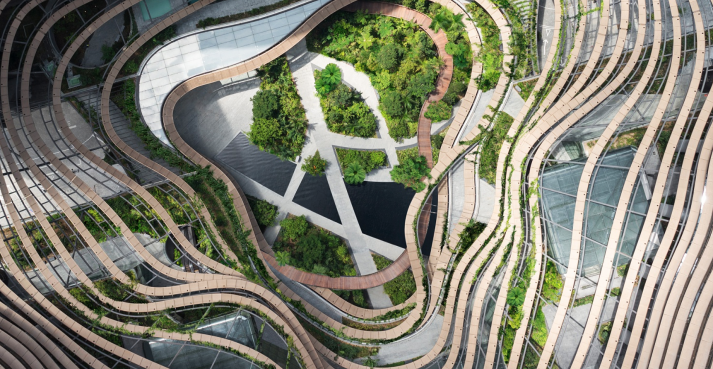The Facts About Landscape Design Uncovered
The Facts About Landscape Design Uncovered
Blog Article
The 6-Minute Rule for Landscape Design
Table of Contents5 Simple Techniques For Landscape DesignNot known Incorrect Statements About Landscape Design Some Known Details About Landscape Design Not known Facts About Landscape Design
Formal design theme. Credit: Gail Hansen, UF/IFAS The lawn is an expansion of the home where a variety of tasks take location. A yard can generally be separated right into three areas: public (the front yard), exclusive (the back yard), and service (generally the side lawn). The location of activity locations depends largely on the sort of location, the size of area needed, the sort of task, and the desired closeness to various other activities and structures (Landscape Design).
The outside wall of your house often works as the initial wall surface or starting point of an exterior space. Incompatible uses ought to be divided, and relevant tasks, such as food preparation and dining, need to be assembled to make the backyard much more reliable and enjoyable. When making use of hardscape to produce rooms, utilize building material comparable to that used in the residence for continuity from your home right into the garden.
Connected rooms. Credit Report: Gail Hansen, UF/IFAS Using similar hardscape attributes and duplicating plants pulls the eye around the yard.
From a style perspective, plant materials have three major functions in the landscape: aesthetic, structural and utilitarian. Visually, plants develop an aesthetically enjoyable atmosphere and structurally plants organize and specify areas.
5 Easy Facts About Landscape Design Described
For mental comfort plants are used as physical or implied barriers for privacy and security. Physical obstacles obstruct both the sight and access to an area and include fences, wall surfaces and plant hedges.
Physical and implied obstacles. Credit Rating: Gail Hansen, UF/IFAS For these factors, the sorts of plants to be utilized (such as trees, shrubs, or groundcovers) should be chosen in the very early phases of preparation. Plant types are selected for their practical abilities so that their future purpose and required area can be thought about at the same time.
The above plane, the upright aircraft and the ground airplane must all be thought about to produce enclosure. Once the form of a plant bed has been established, the plants must be massed (organized) and layered to achieve aesthetic unity find more information and the wanted amount of enclosure. The dimension of a plant mass will rely on the total dimension of the yard, the dimension of the private plants in the mass, and the emphasis or impact wanted from the plant product.
Each plant mass is in front of, behind, or following to, another mass. Debt: Gail Hansen, UF/IFAS Duplicating plants within a mass and repeating masses with similar plants connects the garden with each other. The specific plant characteristics should be thought about to efficiently layer and mass plants.
6 Easy Facts About Landscape Design Described
All plant make-ups start with the primary structure article source plants, the large, mostly evergreen history plants-such as the trees and big bushes. These plants different or enframe rooms, regulate the dimension of the room, and supply the beginning factor for selecting the proper features of the 2nd layer, midground plants, for massing and infill.
Vital points in the yard must be highlighted by the use one-of-a-kind plants, distinct frameworks, or yard accessories. Noting thresholds or entries to areas can be done with gateways, arbors, and steps, or with making use of special and colorful plants. The type and/or design theme of the yard will certainly commonly help establish the vital points and exactly how they need to be highlighted.
Other vital places in the backyard are prime focus, which is utilized to aesthetically organize a designed area. The kind of prime focus often depends on the watching point of view. Various viewpoints or perspectives can disclose different structures in the landscape that may need a variety of centerpieces. Contrasting structure, form, size and shade will certainly catch and hold the eye.
6 Simple Techniques For Landscape Design
Plant types. Credit Rating: Gail Hansen, UF/IFAS After kind, appearance is the following dominant feature of a plant; coarse, tool and fine textures can be used for comparison and emphasis in the landscape.


The enjoyable scent of plants, the audio of wind in the trees, the sound and texture of water, and the shades and textures Get the facts of sculptures, pots and yard furnishings all contribute to the experience of the yard. One information that is frequently overlooked is the result of light on the looks of the plants.
The entire yard modifications in function and appearance throughout the day, and the course of a year, as the light and temperature level change from morning to evening and season to season. Plant option have to think about a plant's development rate, its mature dimension and form, and the maintenance it will certainly call for.
It is essential to recognize the eventual mature dimension of plants so they can be positioned in the right location and spaced appropriately when they are mounted. Giving plants space to expand is a challenge since the usual mature size is commonly based on ideal expanding problems and the environmental conditions of a website might cause a plant to expand bigger or stay smaller.
Report this page